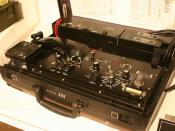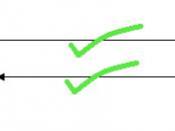For devices to communicate they need an arrangement to communicate in a given language. This arrangement is governed by a set of rules or laws called a protocol. The protocol must define many different aspects of the communication language however given rules dictate that a protocol must as least classify
The rate of transmission (baud or bps)
Synchronous or asynchronous
Half-duplex or full-duplex mode
There are a variety of standard protocols from which programmers can choose. Each has particular advantages and disadvantages; for example, some are simpler than others, some are more reliable, and some are faster.
From a user's point of view, the only interesting aspect about protocols is that your computer or device must support the right ones if you want to communicate with other computers. The protocol can be implemented either in hardware or in software.
Simplex
Simplex refers to one way only transmission of data. An analogy of simplex transmission is a TV, whereby a TV set can receive the signal yet is not capable of sending a signal.
Half Duplex
Half duplex refers to one way transmission of data at any one time. An analogy of half duplex transmission is In contrast, a walkie-talkie is a half-duplex device because only one party can transmit at a time.
Full Duplex
Refers to the transmission of data in two directions simultaneously. For example, a telephone is a full-duplex device because both parties can talk at once.
Analogue
Analogue simply refers to electronic transmission achieved by adding signals of varying frequency or amplitude to carrier waves of a frequency of alternating electromagnetic current. Television, radio and phone transmission have traditionally used analogue technology. Analogue also stands for any fluctuating or continually changing process. It is always represented as a series of sine waves.
Digital
Digital refers to electronic...



Communication Protocols
You provide some good information in your report on communication protocols. Most of us use modems but don't have much knowledge of some of the basics pertaining to them. Your paper contained some useful definitions which will undoubtedly be helpful to those who desire a basic understanding of this technical area. Nice effort!
5 out of 6 people found this comment useful.